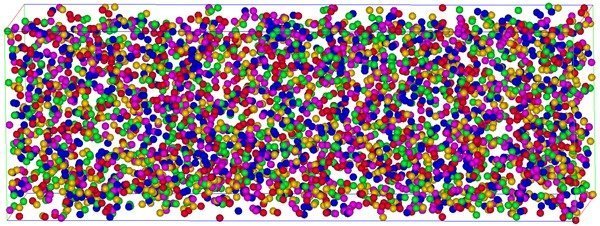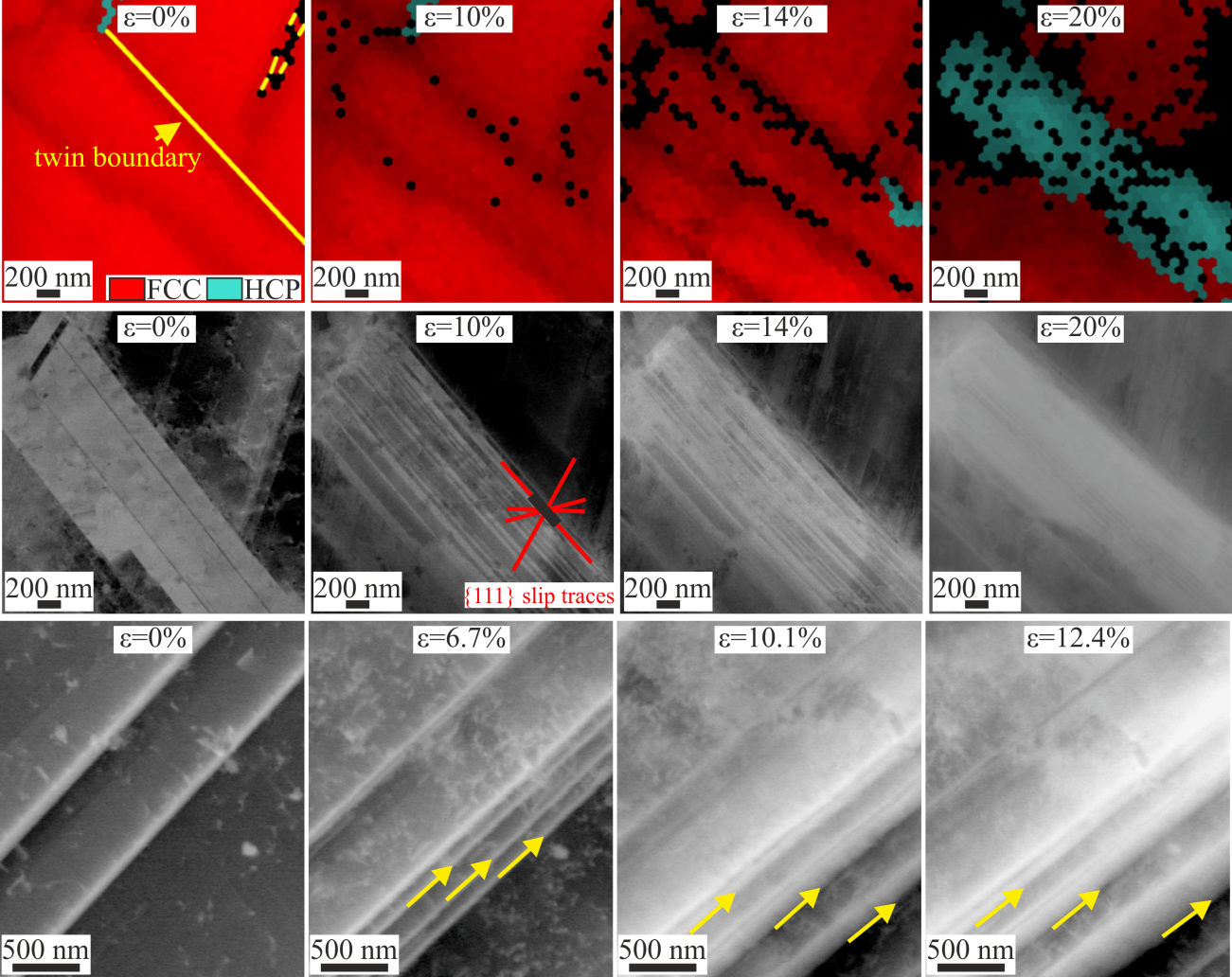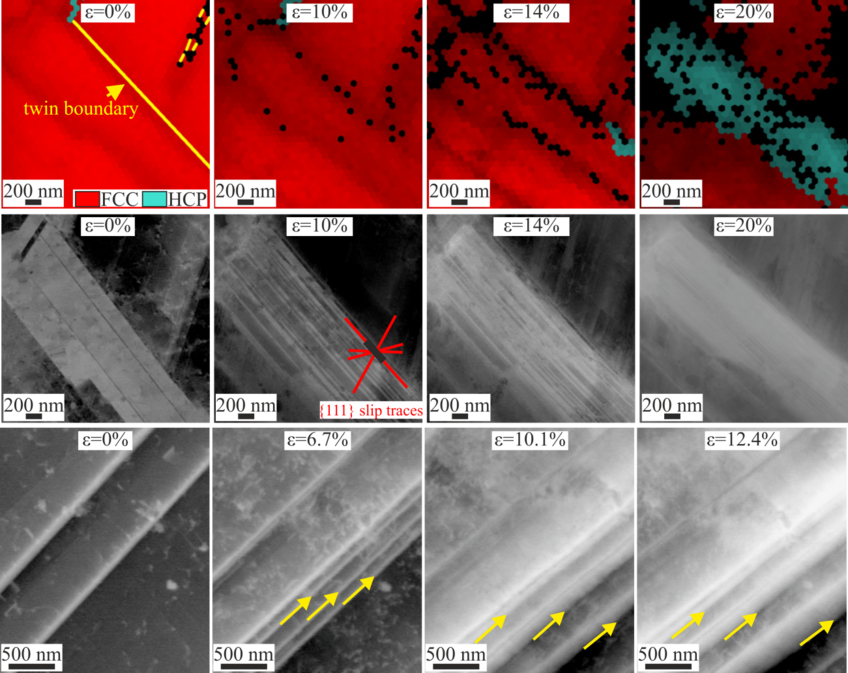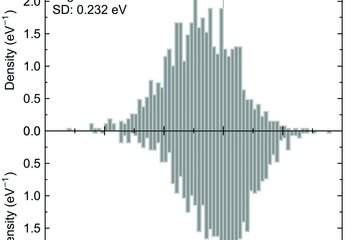
Understanding the phase transformation and twinning mechanisms in an interstitial high-entropy alloy
The recently developed interstitial high-entropy alloys (iHEAs) exhibit an enhanced combination of strength and ductility. These properties are attributed to dislocation hardening, deformation-driven athermal phase transformation from the face-centered cubic (FCC) γ matrix into the hexagonal close-packed (HCP) ε phase, stacking fault formation, mechanical twinning and precipitation hardening. For gaining a better understanding of these mechanisms as well as their interactions direct observation of the deformation process is required. For this purpose, an iHEA with nominal composition of Fe-30Mn-10Co-10Cr-0.5C (at. %) was produced and investigated via in-situ and interrupted in-situ tensile testing in a scanning electron microscope (SEM) combining electron channeling contrast imaging (ECCI) and electron backscatter diffraction (EBSD) techniques. The results reveal that the iHEA is deformed by formation and multiplication of stacking faults along {111} microbands. Sufficient overlap of stacking faults within microbands leads to intrinsic nucleation of HCP ε phase and incoherent annealing twin boundaries act as preferential extrinsic nucleation sites for HCP ε formation. With further straining HCP ε nuclei grow into the adjacent deformed FCC γ matrix. γ regions with smaller grain size have higher mechanical stability against phase transformation. Twinning in FCC γ grains with a size of ~10 μm can be activated at room temperature at a stress below ~736 MPa. With increasing deformation, new twin lamellae continuously nucleate. The twin lamellae grow in preferred directions driven by the motion of the mobile partial dislocations.













